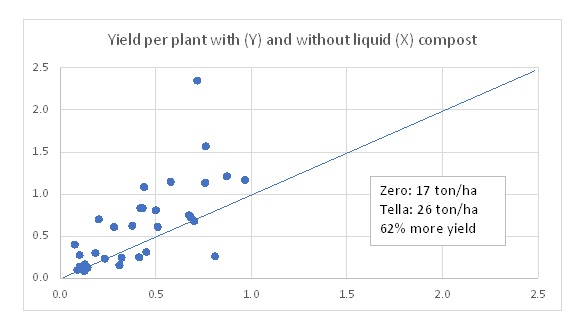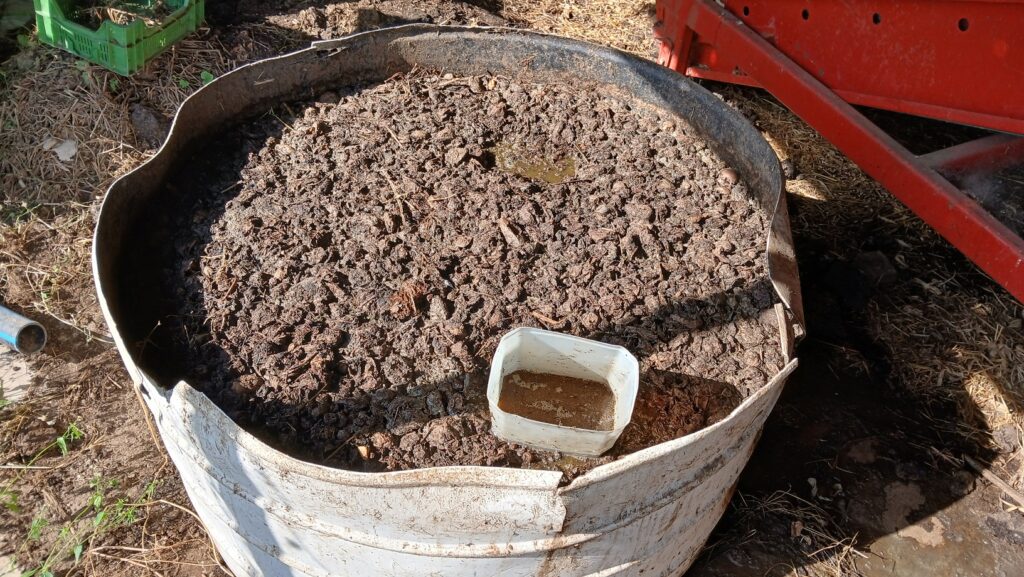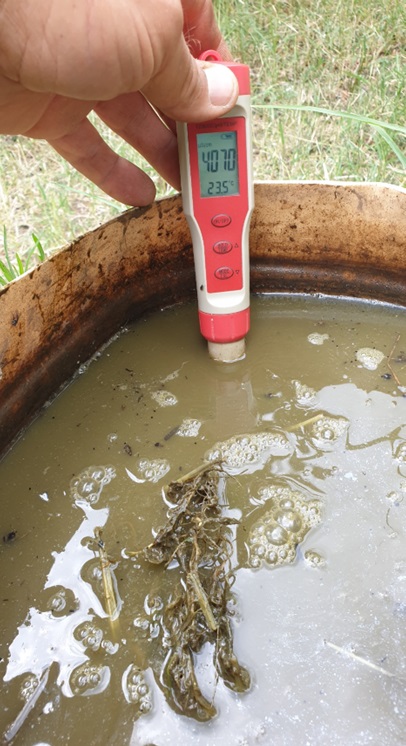Anyone who has ever passed through the rural villages of Ethiopia has probably noticed: here and there long stakes stick out of the hedges at the entrance to many compounds. With an inverted plastic jar or bottle on top. This signal is clear to the villagers: ‘tella’, the local barley drink, or a stronger distilled variant is available there. So: come along and enjoy a mug full of tella. For me, the spicy taste evokes much better associations than the dull brown color.
What you may have noticed as well, is that green waste is everywhere. Where vegetables or tomatoes are loaded, there are piles of rejected remains. Where a stable is located along the road, the manure is swept onto the road with the straw. Everything that the ruminants do not digest is considered as waste. And waste is of no use, you throw it aside.
The cultivation of food crops in Ethiopia is mainly done using artificial fertilizers. Cow manure has a different purpose, it is dried and used for the cooking fires. The government distributes DAP and urea to the farmers annually. Two types of fertilizer that contain the much-needed (yes, here it is) nitrogen and phosphate. Although most farmers follow the recommended amounts reasonably well when fertilizing, the yield of cereals, vegetables and potatoes remains roughly stuck at 20-30% of the normal level. The main culprit in this is the lack of the other necessary fertilizers, such as potassium, magnesium and calcium. These are absorbed by the plant from the soil every growing season, but when the harvest is taken away, these minerals disappear from the field for good. And are not replenished. Crop growth is increasingly restricted by this; and even a double dose of DAP or urea does not undo this deficiency.
In recent times, we have conducted tests with the production of liquid compost from all kinds of organic waste. Due to the nine dry months with no or little rainfall, organic material in the soil is decaying very slowly. And a compost heap must be kept wet, which is not going to happen. Liquid composting is simple and produces a beautiful ‘tea’, which in terms of color is very similar to tella…. And which is certainly no less healthy for the plant than tella is for us. We therefore call this stuff ‘compostella’, an appealing name, for us and for them.
This compostella contains almost the entire spectrum of fertilizers that a growing plant needs. It is not difficult to prepare and – diluted with water – easy to pour over the plants. With really good results!
Last year we applied compostella to teff, the fine grain of Ethiopia. This resulted in a yield increase of more than 100%, a doubling of the harvest. Whereby the costs for the compostella were less than 5% of the additional yield.

We then also administered it to thirty allotments of urban gardeners in Bishoftu. And again, the yield of potatoes was 62% higher than without tella. An increase from 17 tons to 26 tons per hectare. Only because of the compostella!

In the meantime, we optimized the maturation of the compostella in small basins. In three weeks, in this warm climate, the decomposition is largely completed, as the EC-values tell us. We can compress the remaining clean-soaked remains into easily combustible wood dust blocks, with a more pleasant smoke than that of dried cow pats.
The next step is that we will start the preparation and application of compostella with the farmers and gardeners. They already have the ingredients. We are now looking for the cheapest type of robust basins (1,000 liters) made of plastic or concrete, affordable for the people here (suggestions are welcome!). So that they too can use the available organic remains to double the harvest of their gardens and fields. Because that is what Ethiopia needs: making use of everything that is available, to first be able to feed the population well; a full stomach is a precondition for stability and development.



Compostella, farmers’ profit resulting from waste!

Leave a Reply